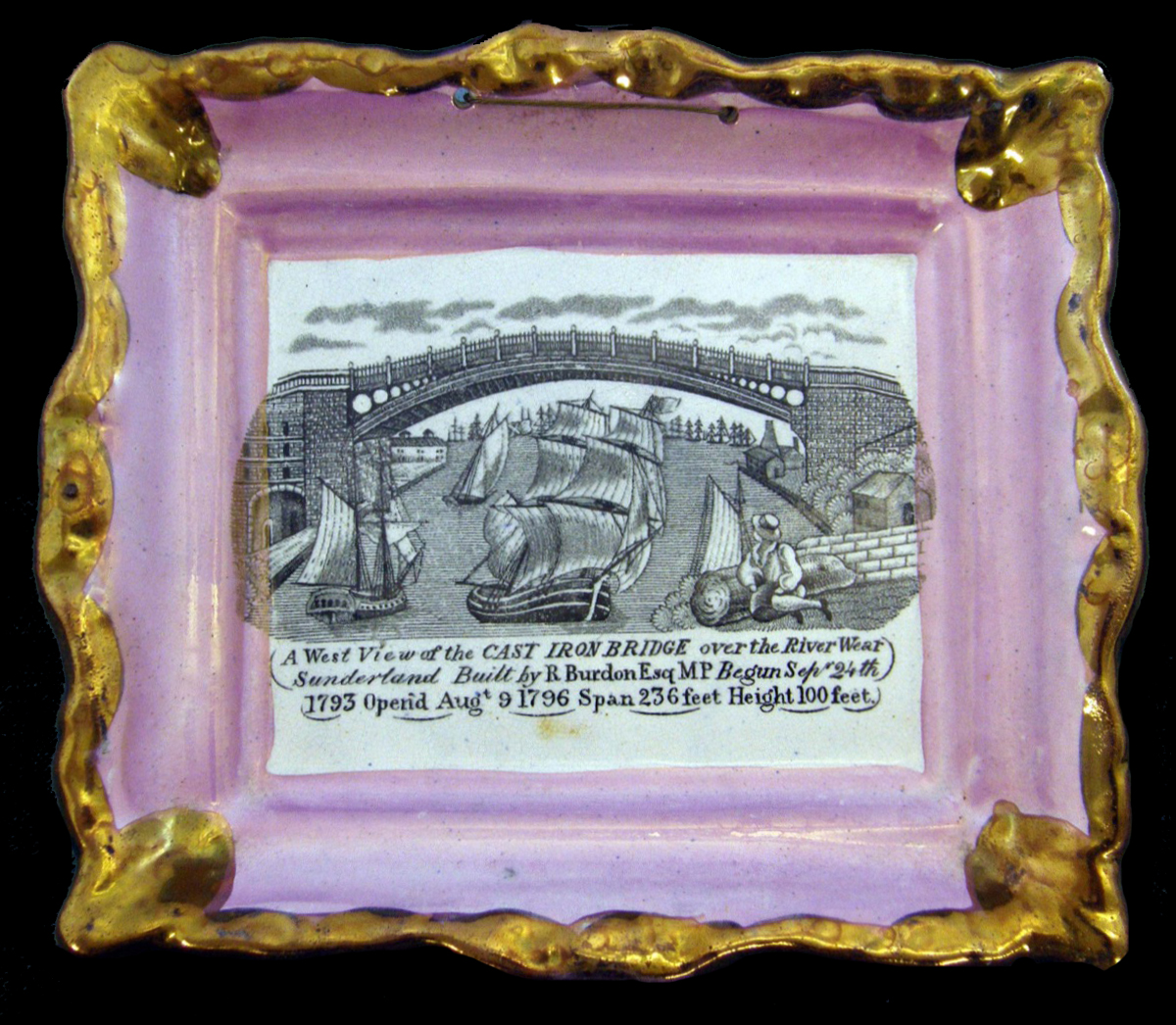
LONDON – I’ve always been intrigued by Victorian lustre pottery, but it’s not until you start to learn more about the stuff that you discover the technique to make it dates back to the 9th century. Ironically, it was produced probably by accident.
At the time, the finest white porcelain was being produced only in China and the rest of the world was eager to learn the secrets of its production. In the vast Arab empire of Abbasid, centered on Baghdad, then the world’s largest and most advanced city, potters worked feverishly to crack the recipe code.
Their materials could never be as fine as China clay (kaolin), so they developed stark white glazes and experimented using metallic pigments and techniques employed by glassmakers dating back to the Romans. Pots came out of the kilns covered in a lustrous sheen that imitated gold and silver.
By the 13th century, lustre pottery was a highly prized commodity from Persia and Egypt and when the Moors conquered Spain, production spread there too.
Exports poured across Europe, prompting Italian potters to copy the ware, while in Germany, a young alchemist Johann Friedrich Böttger claimed he could make gold from local clay. He failed, but his experiments produced a formula for porcelain, which was almost as valuable. The Meissen factory was the result.
Lustre ware became popular in England in the 19th century, led probably in 1805 by Josiah Wedgwood, who introduced pink and silver lustre to simulate mother of pearl decoration on bowls and dishes shaped like shells.
In 1810, the New Hall pottery in Stoke-on-Trent perfected a means of transfer-printing decoration in gold and silver lustre, while Wedgwood’s later mass-produced lustre ware encouraged potters in Scotland and Wales to follow suit.
Various other potters revived the tradition, notably William de Morgan towards the end of the 18th century and Pilkington’s Royal Lancastrian Pottery, which ran from 1891-1938.
However, some of the most colorful and collectible lustre pottery was produced in the Wearside potteries around Sunderland, where the presence of decent supplies of clay, coal and the close proximity of the sea meant the industry flourished.
Probably the first pottery sited on the Wear was at the mouth of the river in Sunderland in 1753. By 1860, almost 20 factories were in production, although a combination of a shortage of skilled labour – the mines and the shipyards paid better wages – and the fierce competition from Staffordshire potteries meant Sunderland could not match their quality and prices.
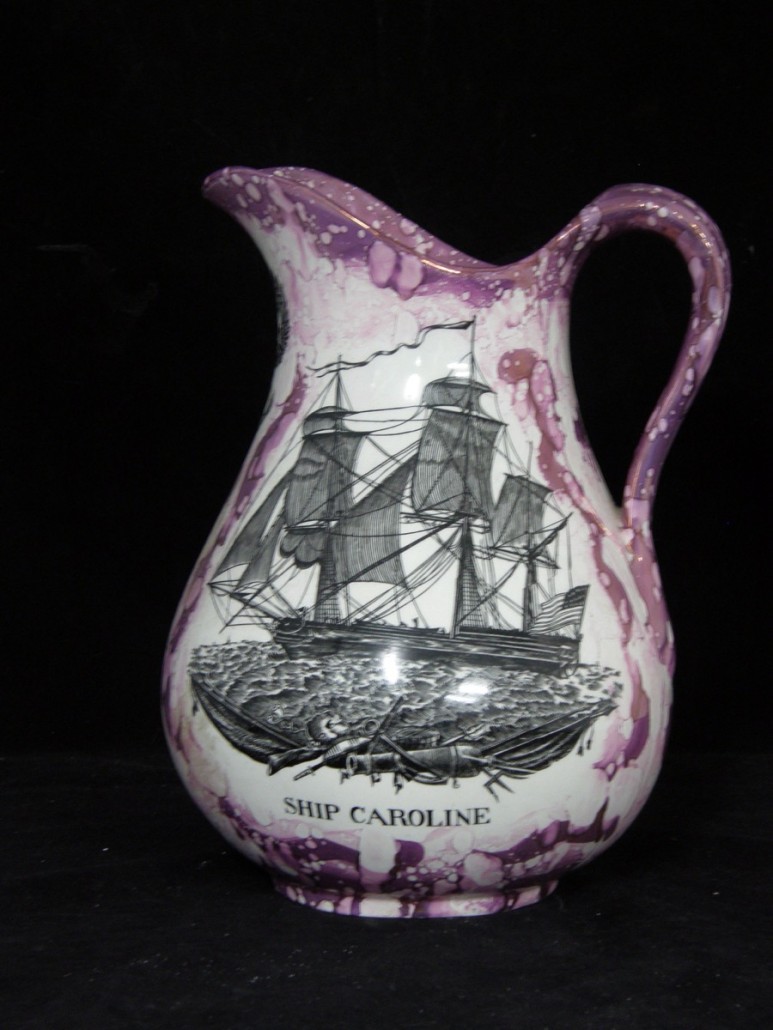
However, Sunderland lustre pottery lacks nothing in quirky originality, charming imagery and wonderfully colorful designs. The most common is pink, or subtle shade of purple, and it can also be found in silver and copper, orange and apricot.
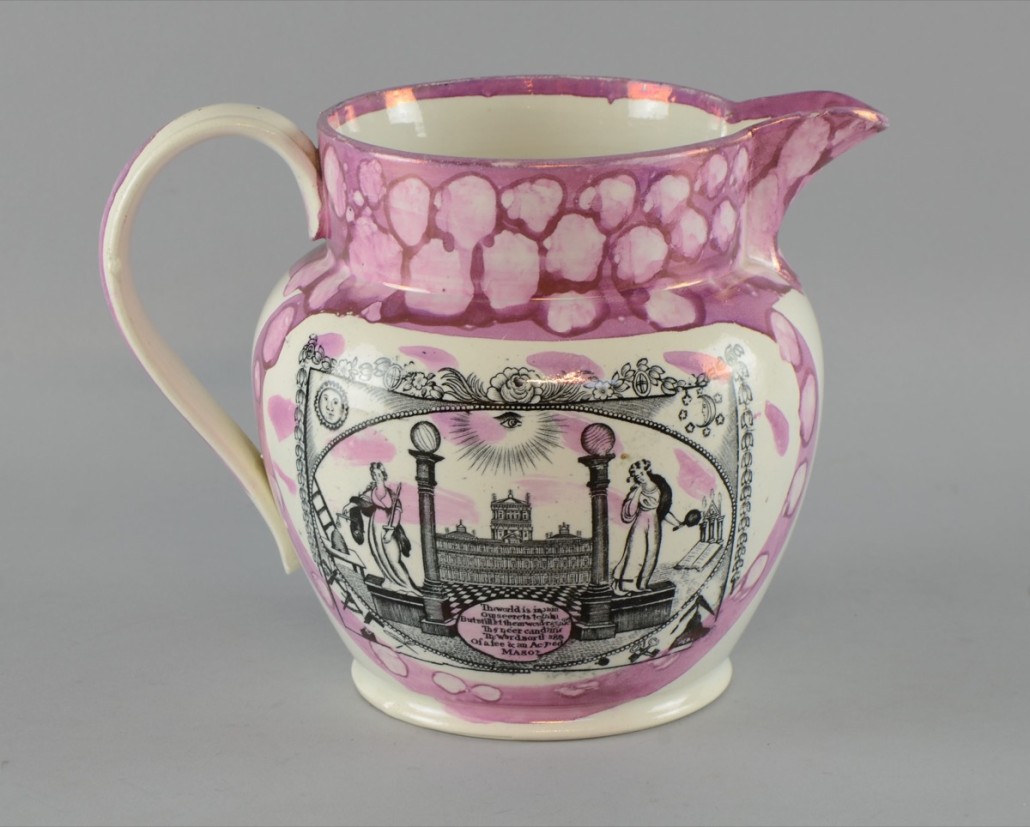
The choicest pieces are those decorated with pictures taken from naïve prints of the era, the best known of which depict the cast iron bridge and the New Bridge, both of which span the River Wear with a busy shipping scenes beneath.
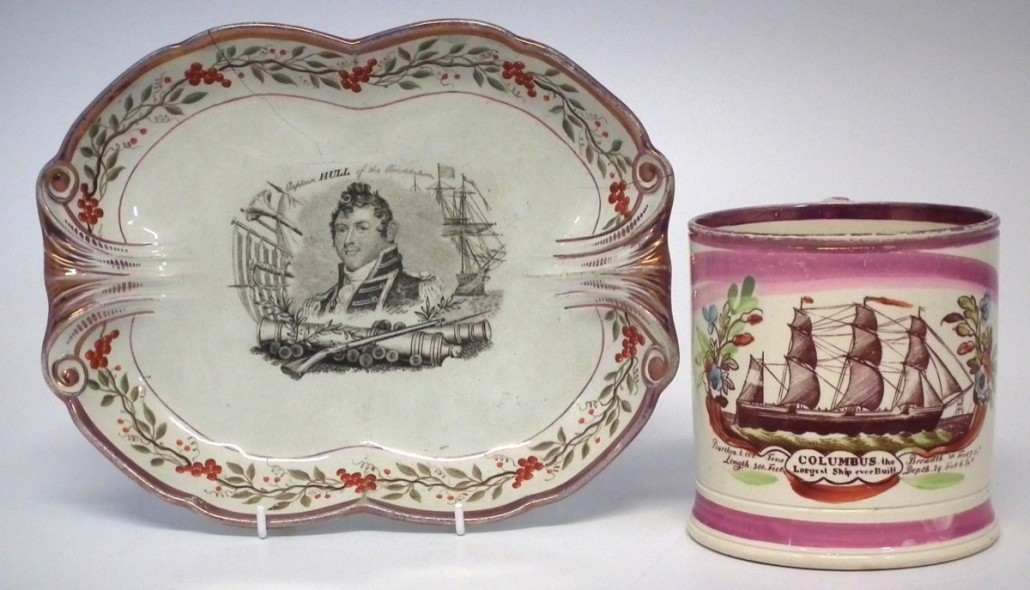
The other thing that attracts collectors to Sunderland lustre is its charming transfer printed mottos and rhymes which can be found on all types of the ware from tea cups, saucers and plates to large punch bowls and jugs, which must have caused much mirth in the ale houses. One reads: “Success to the Fleece To the Plough and the Sail, May our taxes grow less And our Commerce ne’er fail”.
Another, found on a chamber pot decorated inside with a particularly evil looking green frog, reads: “Dear lovely wife pray rise and p-ss/Take you that handle and I’ll take this/ Let’s use the present which was sent/ To make some mirth is only meant/ So let it be as they have said, We’ll laugh and p-ss and then to bed”.
The commercial production of lustre pottery was achieved using a process perfected by John Hancock (1758-1857) a ceramic chemist, whilst working at the Staffordshire factory of Spode in 1805. Platinum, then called platina, had been discovered in the Spanish colonies of South America and Hancock was the first to use it to produce silver lustre.
Gold and copper lustre appeared in 1806. When applied to a brown colored pottery, gold lustre fires to a copper color, while if applied to a white background, it produces colours ranging from light pink to deep purple.
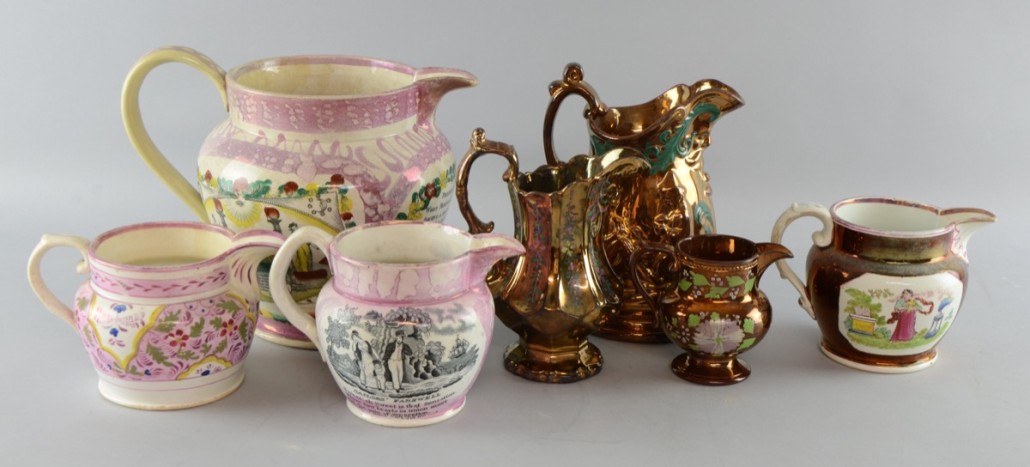
The secrets spread quickly throughout Staffordshire and then on to Leeds and Sunderland, but it was in the latter centre where the technique that produced a speckled or mottled effect was first realized.
The lustre glaze was usually applied to the objects to be decorated using broad brush strokes, with panels being left free for painted enamel inscriptions or patterns or transfer-printed designs and verses.
It was discovered that spraying spirits of turpentine through a tube, covered at the end with fine muslin, caused tiny droplets to burst on to the still wet lustre, producing irregular blotches that when fired, make every pot different.
Some of the best known Sunderland lustre wares are the pious wall plaques made to look like a framed picture, inscribed with religious or temperance themes. Simple examples read “Thou, God, See’st Me” or “God is Love”, while others are more complex. One example, dated 1849, reads “God is keeping me and the gift giver hopes forever”.
The evils of drink are balanced more or less equally with inscriptions urging imbibers to make merry. Puzzle jugs, for example, where the user must fathom how to drink from a vessel with incised holes where the spout should be is wagered: “Gentlemen Now Try Your Skill/I’ll Hold Your Sixpence If You Will/That You Don’t Drink Unless You Spill”.
The secret is usually a hole under the handle that, when covered with a finger, allows fluid to be drawn through a straw-like spout.
A series of eight designs by the caricaturist George Cruickshank (1792-1878) produced by Samuel Moore & Co in aid of the Temperance Movement are particularly sought after today. The series is entitled “The Bottle” and depicts episodes in the life of a family whose members, to their ultimate cost, take to drink.
The joy of collecting lustre pottery today is as it was when it was new: a display positioned where it can catch the light, for example opposite an open fire or on furniture where it can be illuminated by candles, produces a warm glow that is both comforting and reassuring on the coldest of nights, now surely drawing in. The other joy is it’s not that expensive.


